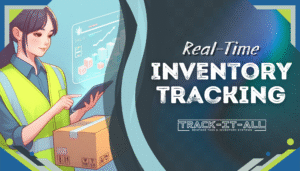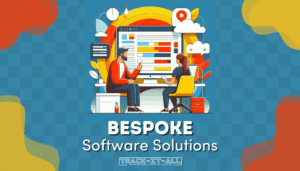In the pursuit of cultivating efficiency within the human resources domain, the ascendancy of HRIS software and ATS software has eminently redefined the paradigms of talent acquisition tools. South Africa’s businesses are steadily embracing these innovations to streamline hiring and bolster employee data management. By understanding the HRIS definition as an encompassing suite for HR functionalities and the ATS definition focusing on recruitment enhancement, organizations can aptly navigate their talent acquisition and human capital strategies.
Embedding such sophisticated systems into the recruitment framework encourages a seamless convergence of digital efficiency and pragmatic human resource management. Whether it’s refining the recruitment spectrum or managing the intricate aspects of employee data, the fusion of HRIS and ATS software symbolizes a technological leap forward for HR professionals in South Africa.
Key Takeaways
- HRIS software is a versatile platform enhancing various HR tasks, including recruitment and training.
- ATS software specializes in redefining recruitment processes, improving candidate management.
- Integration of HRIS and ATS systems is crucial for efficient hiring and data management.
- Sophisticated HR technologies streamline operations and uphold a positive candidate experience.
- Adoption of these tools in South Africa has become inevitable for competitive talent strategy.
Diving Into the Digital Transformation of Recruitment
The realm of recruitment has undergone a significant metamorphosis with the advent of digital transformation, reshaping how talent is sourced, engaged, and hired. In South Africa, this shift has been marked by the integration of recruitment technology solutions that are refining the landscape of talent acquisition. In particular, innovations like HRIS and ATS are emerging as game-changers in the industry.
Driving efficiency and strategic hiring, these tools offer a competitive edge in the quest for top talent. Through the deployment of online talent acquisition tools, hiring managers are provided with a suite of functionalities engineered to enhance the candidate experience, streamline administrative workload, and ensure robust data management, all while being mindful of budget constraints.
Let’s explore the impacts of these technological advancements:
- HRIS systems automate time-consuming manual HR tasks, liberating HR personnel to focus on strategy and engagement.
- ATS software facilitates a seamless candidate journey through efficient resume filtering and interactive communication modules.
- Together, these tools cultivate a sophisticated and pleasant candidate experience, helping businesses build a positive employer brand.
“In this era of digital transformation, the companies that prioritize innovative recruitment technology solutions are setting new benchmarks for success in talent acquisition.”
The table below highlights the contrasts between conventional hiring methods and the modern approach guided by technological interventions:
| Conventional Hiring | Digital Recruitment |
|---|---|
| Manual resume screening | Automated resume filtering with ATS |
| Paper-based employee data management | Digitized data storage and management via HRIS |
| Lengthy hiring cycles | Streamlined hiring process |
| Generic candidate interactions | Personalized engagement using online platforms |
It’s evident that with recruitment technology solutions taking center stage, businesses are now able to revamp their recruitment protocols and position themselves advantageously in the race for top talent. South Africa’s progressive organizations are ensuring that their digital transformation journeys align with global best practices and the expectations of an increasingly tech-savvy workforce.
The Evolution and Impact of Recruitment Technologies
The HRIS evolution has been marked by its progressive capability to handle a myriad of HR tasks, seamlessly merging features once reserved for HRMS and HCM systems. As these platforms continue to mature, they are increasingly automating HR tasks, carving a niche that promotes efficiency and strategic HR management. Meanwhile, the ATS impact has revolutionized the way organizations scout and secure talent. With precision tools for job postings and resume screening, ATS systems articulate sophistication in recruitment technology developments.
In regions like Australia, the adoption of these systems has been critical in reducing the impact of human error on data security, while South African entities leverage these technologies to adhere to stringent compliance regulations and bolster their recruitment analytics. Below is a comparative overview demonstrating the transformative role of HRIS and ATS in modern hiring practices.
| Feature | HRIS Impact | ATS Impact |
|---|---|---|
| Data Management | Consolidates employee data post-hire | Manages candidate data during the recruitment process |
| Task Automation | Automating diverse HR functions from payroll to performance evaluations | Streamlining candidate sorting, interviewing, and hiring phases |
| Legal Compliance | Maintains records and processes in line with legal standards | Ensures job posting and hiring practices comply with employment laws |
| Reporting and Analytics | Provides detailed reports on HR metrics and employee trends | Offers analytics on recruitment channels and candidate quality |
The landscape of recruitment technology developments illustrates a compelling shift toward high-caliber, automated systems. By intertwining sophisticated technology with human-centric approaches, organizations are not only enhancing their operational effectiveness but also securing their position as vanguards of the digital recruiting era. These recruitment software features enable companies to streamline their hiring processes, from initial candidate sourcing to final selection. With the ability to automate repetitive tasks and analyze large volumes of data, recruiters can focus their efforts on engaging with top talent and making informed decisions. This combination of advanced technology and personalized interaction fosters a seamless and efficient recruitment experience for both candidates and hiring teams.
The relentless progression in HR tech underscores an era where precision, analytics, and a data-driven mindset are not just valuable but imperative to the domain of talent acquisition.
What is HRIS or ATS software?
Understanding the nuances of HR tech language can significantly impact the strategic planning of a business’s human resource management. When it comes to HRIS and ATS systems, it’s essential to grasp their unique functions and applications. Let’s delve into a detailed HRIS and ATS comparison to highlight the distinctive features and utilities of each in the hiring landscape of South Africa.
Defining HRIS Software
HRIS software stands as the technological backbone for simplifying a multitude of HR responsibilities. It is a comprehensive solution that allows for the efficient digital management of employee data. From payroll to attendance, from training to benefits administration, a robust HRIS system acts as the central hub, ensuring all employee information is securely stored and easily accessible. But what is HRIS software beyond these features? It’s the integrated means for organizations to enhance their employee lifecycle management post hiring.
Understanding ATS Software
Shifting focus from the extensive umbrella of HR management to the realm of targeted recruitment, ATS software emerges as a key player. It is tailored to streamline the hiring process, manage job applicants with greater precision, and heighten the overall quality of hires. The prevalence of such systems within top-tier companies underscores not only their importance but also the pivotal role they play in maintaining recruitment efficiency in today’s competitive environment.
Key Differences and Uses in Hiring
To further elucidate the HRIS vs ATS landscape, let’s consider their core applications. An HRIS system is often employed after the hiring is concluded, providing a full spectrum of HR functions and focusing on the ongoing management and development of existing employees. On the flip side, ATS software shines in its precision during the pre-hire process, from job posting to selecting the right candidate for the role. These systems exemplify how technology can be harnessed to support different stages and functions within the hiring cycle, each with its distinct advantages for businesses looking to thrive in the dynamic market of South Africa.
Benefits of Integrating HRIS in the Hiring Process
The strategic incorporation of HRIS features into the hiring process provides a host of HRIS benefits to South African businesses, particularly in terms of employee data integration and facilitating internal candidate applications. Impacting both efficiency and effectiveness, a robust HRIS system can radically transform talent acquisition.

A key advantage to HRIS infrastructure is the centralization of employee data, which simplifies the management and retrieval of comprehensive candidate information, thus enhancing the hiring decision-making process. Additionally, streamlined internal candidate applications lead to a more equitable and transparent internal mobility procedure, increasing employee satisfaction and retention.
- Financial efficiencies with a reduction in recruitment-related costs
- Improved accuracy and consistency in data management and analysis
- Decreased reliance on disparate systems leading to better data security
Furthermore, smaller businesses benefit profoundly as HRIS systems level the playing field, providing them with top-tier functionalities that may otherwise have been cost-prohibitive. This advantage is particularly potent in the realm of recruitment, where employee data integration results in significantly improved workflow continuity.
We see a paradigm shift in the approach to hiring when HRIS systems are adeptly implemented; they lead to improvements not just in the recruitment phase but across the entire lifespan of the employee within the company.
While challenges may arise, such as potential data entry errors, the comprehensive HR auditing capabilities inherent in HRIS tools aid in rapidly identifying and correcting such discrepancies, further underscoring the robustness of these systems.
Optimizing Talent Acquisition with ATS Features
In the competitive landscape of talent acquisition, companies in South Africa are increasingly turning to Applicant Tracking Systems (ATS) to refine their recruitment strategies. The advanced ATS functionality serves as a cornerstone for streamlined hiring processes, ensuring that each phase from candidate sourcing to the final selection is carried out with precision and ease.
ATS Functionality: From Sourcing to Hiring
The automation capabilities of ATS are transformative, particularly when it comes to candidate sourcing. By leveraging ATS features, recruiters can reach a wider pool of candidates and automatically sort through applications to find the best fits for open positions. Below, we illustrate the hiring process optimizations made possible with ATS:
| ATS Function | Impact on Hiring Process |
|---|---|
| Automated Job Postings | Expedites the vacancy announcement and attracts a large number of applicants swiftly. |
| Resume Screening | Efficiently filters unqualified resumes, saving valuable time for recruiters. |
| Interview Scheduling | Syncs with calendars to schedule interviews, reducing administrative burdens. |
| Candidate Communication | Automates emails for updates and feedback, keeping candidates engaged. |
| Analytics and Reporting | Provides insights on hiring metrics to refine and improve recruitment strategies. |
Improving Candidate Quality and Employer Branding
High-caliber candidates are the linchpin of any successful organization. ATS doesn’t just facilitate a more efficient recruitment cycle; it also plays a crucial role in boosting employer branding. By maintaining a consistent and communicative candidate experience through ATS, organizations reinforce their reputation as employers of choice. This, paired with the sophisticated selection tools of ATS, undoubtedly leads to a rise in the quality of new hires.
Moreover, as applicants interact with a company’s ATS, their experience is implicitly tied to the company brand. A smooth, user-friendly application process can significantly uplift the perception of the company’s brand among potential hires. Let’s delve into the dual benefits that ATS provides in enhancing candidate quality and employer branding:
- Streamlined Candidate Experience: ATS systems provide an intuitive interface for applicants, thereby improving their overall perception of the company.
- Enhanced Communication: With automated and personalized communication, candidates feel valued and informed at every step of their application journey.
- Quality of Hires: Through refined screening methods, ATS helps in selecting candidates who are most likely to excel in their roles and contribute meaningfully to the company.
- Brand Advocacy: Candidates who have a positive experience are more likely to recommend the company to their network, further strengthening the employer brand.
In conclusion, the integration of ATS in the recruitment strategy is not merely a trend but a proven method for enhancing talent acquisition outcomes. Through adept ATS functionality and features, South African organizations can not only source better candidates but also elevate their hiring process and employer brand in a competitive job market.
Navigating Challenges: The Limitations of HRIS and ATS Software
Despite their influential role in modernizing HR management and recruitment, HRIS and ATS systems are not without HRIS disadvantages and ATS limitations. One of the predominant issues plaguing HRIS platforms is manual data entry errors, which can significantly undermine the integrity of employee information and analytics. Furthermore, the evolution of technology sometimes introduces compatibility challenges, demanding continuous upgrades that might strain the budgets of smaller enterprises.
ATS software, while efficient in handling large volumes of applications, can fall short due to its inherent ATS limitations. Notably, the risk of overlooking qualified candidates based on algorithmic keyword searches is a concern, bringing into question the depth at which these systems analyze potential talent. This limitation underscores the importance of retaining human oversight to complement digital processes.
| Challenge | HRIS Disadvantages | ATS Limitations |
|---|---|---|
| Data Accuracy | Manual data entry errors leading to misinformation | Potential exclusion of qualified candidates due to keyword mismatch |
| Security | Vulnerability to data breaches due to system loopholes | Data security concerns owing to sensitive candidate information exchanges |
| Cost Management | Upfront and ongoing costs can be prohibitive for small businesses | May require additional investment in customization to meet specific organizational needs |
| Technological Evolution | Requires continuous updates to stay relevant and efficient | Might not fully adapt to rapid changes in recruiting methodologies |
To balance these concerns, a synergy between the technological robustness of HRIS systems and the strategic precision of ATS tools must be achieved. This requires a vigilant approach to mitigating data security concerns and fostering a culture of accuracy to combat the risks associated with manual data entry.

In conclusion, while HRIS and ATS are pivotal in enhancing recruitment and HR functions, organizations in South Africa must remain attentive to the challenges they present. By recognizing the value of combining digital efficiency with human expertise, companies can maneuver these limitations effectively and secure a resilient talent management framework.
Strategic Considerations: When to Choose HRIS over ATS and Vice Versa
In the realm of human resources technology, the strategic considerations of selecting between an HRIS or ATS can be pivotal to organizational success. This pivotal HRIS vs ATS decision-making should be deeply rooted in the nuanced needs of the business. Such an assessment requires an understanding of what each system can offer in the context of specific operational requirements.
Assessing Organizational Requirements
An Organizational requirements assessment is key in choosing the right system. HRIS systems are typically comprehensive, serving an array of post-hire HR functions. Conversely, ATS systems address the narrower pre-hire focus of managing and optimizing the talent acquisition process. For businesses that prioritize recruiting, leveraging ATS might be a more targeted choice, especially where the frequency of hiring is high and the need for a specialized system is evident.
Cost-Benefit Analysis for Small and Medium-Sized Businesses
Small to medium-sized businesses must undertake a thorough cost-benefit analysis to weigh the financial practicalities against the functional offerings of HRIS and ATS platforms. Such an analysis involves scrutinizing various parameters, including the total cost of ownership, implementation expenses, and the anticipated return on investment in the form of improved efficiency, better quality hires, and a stronger company profile in the job market.
| Factors | HRIS | ATS |
|---|---|---|
| Primary Focus | HR Management Post-Hire | Talent Acquisition |
| Core Features | Payroll, Training, Benefits Management | Resume Screening, Applicant Management |
| Benefits | Centralized Employee Data | Streamlined Hiring Workflow |
| Ideal for Businesses With | Complex HR Processes | High Volume Recruiting Needs |
| Cost | Higher Initial Investment | Targeted Spending |
| ROI Considerations | Long-Term Efficiency Gains | Immediate Impact on Hiring Quality |
In essence, whether a business leans towards HRIS or opts for an ATS, the ultimate goal is to enhance its operational prowess. This decision, when made after rigorous analysis and reflection on strategic considerations, will not only cater to the immediate organizational requirements but also set the foundation for sustained future growth and adaptation in an ever-evolving market landscape.
Conclusion
Within the dynamic sphere of HR management, the emergence and refinement of HRIS and ATS software have been transformative. These tools embody the essence of smart hiring, elevating the operational ease for businesses across South Africa. By automating and organizing countless HR tasks, they serve as linchpins in the digital recruitment strategy that is critical in today’s competitive talent market. In a world where efficiency and precision are paramount, integrating these technologies is a move towards innovation and future-readiness.
For companies aiming to fortify their recruitment and retention, making a strategic HR software investment becomes a catalyst for growth. The nuanced considerations presented in earlier sections delineate the complementary roles of HRIS and ATS platforms. As these systems refine recruitment and general HR management, businesses are poised to harness their full potential, balancing technology with the irreplaceable human element of HR.
Ultimately, the deployment of HRIS and ATS software is not merely about keeping pace with technological trends; it’s about making a judicious choice to invest in your company’s core operations. Aligning HR software investments with organizational goals is paramount for fostering a culture of smart hiring, which in turn can result in stellar performance and sustainability. South African companies that navigate this digital transition wisely are set to reap the benefits of streamlined processes and enhanced talent management for years to come.







